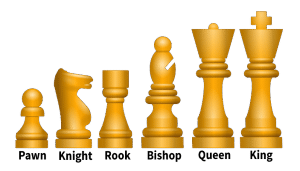Introduction to Basics of Chess | Chess Tutorial Course: Beginner to Advanced - Class 6 PDF Download
Introduction
Chess is a timeless game that has captivated players for many generations. Whether you are a beginner exploring the world of chess or someone looking to refresh your skills, understanding the basics is essential. This article will guide you through the fundamental aspects of chess, including how to set up the board, understand chess symbols, and use chess notation.
How to Set Up the Board
Setting up the chessboard is the first step in your chess journey. The board consists of 64 squares that alternate in light and dark colours. Here’s how to set it up:
- Place the board between you and your opponent, ensuring that each player has a light-coloured square in the bottom right corner.
- Arrange the pieces on the board as follows:
- Rooks. Place these in the corners of the board. For White, the rooks go on a1 and h1. For Black, they are placed on a8 and h8.
- Knights. Position the knights next to the rooks. For White, they go on b1 and g1. For Black, they are placed on b8 and g8.
- Bishops. The bishops are placed next to the knights. For White, they go on c1 and f1. For Black, they are positioned on c8 and f8.
- Queen. The queen is placed on the square that matches her colour. For White, this is d1, and for Black, it is d8.
- King. The king is positioned next to the queen. For White, this is e1, and for Black, it is e8.
- Pawns. The pawns fill the second row in front of the other pieces. For White, they occupy a2 to h2. For Black, they are placed from a7 to h7.
Understanding Chess Symbols

Chess pieces are shown by symbols to make it easy to recognize them on the board. Here's a quick overview of the symbols and the pieces they represent:
- King: K
- Queen: Q
- Rook: R
- Bishop: B
- Knight: N
- Pawn: no symbol, as pawns are represented by their absence on the board
Symbols are usually followed by a letter and a number to show the piece's position on the board. For instance:
- Nd4: indicates a knight on the d4 square
- Ke1: indicates a king on the e1 square
Grasping these symbols is vital for reading and writing chess notation, which will be discussed next.
In summary, mastering chess notation and symbols is crucial for effective gameplay as it improves communication and understanding of the game among players.
|
45 videos|14 docs|5 tests
|
FAQs on Introduction to Basics of Chess - Chess Tutorial Course: Beginner to Advanced - Class 6
| 1. What are the basic rules of chess that beginners should know? |  |
| 2. How do I set up a chess board correctly? |  |
| 3. What do the symbols in chess notation mean? |  |
| 4. What is the importance of controlling the center in chess? |  |
| 5. How can beginners improve their chess skills? |  |

















